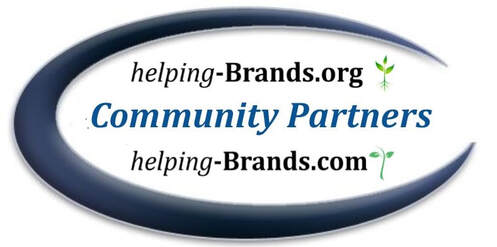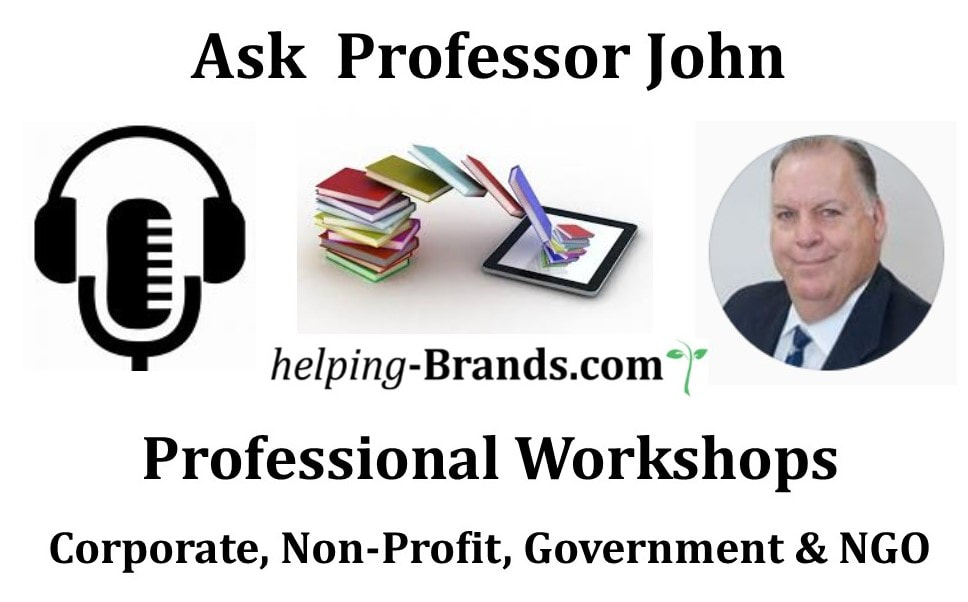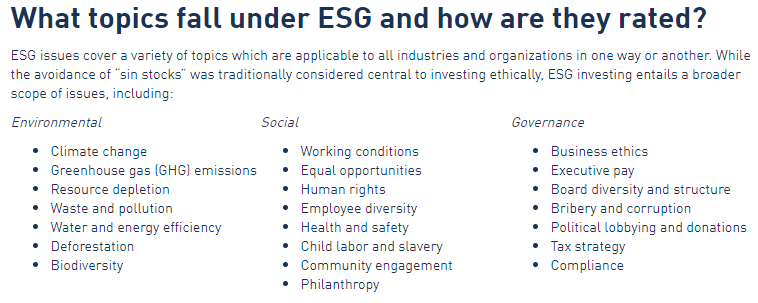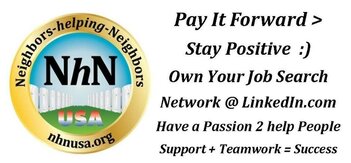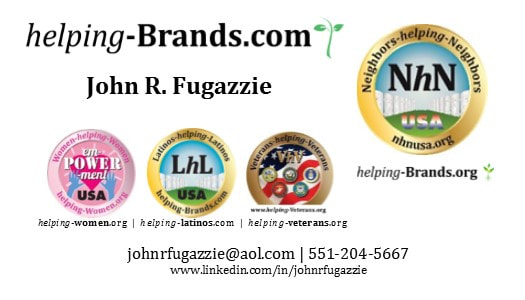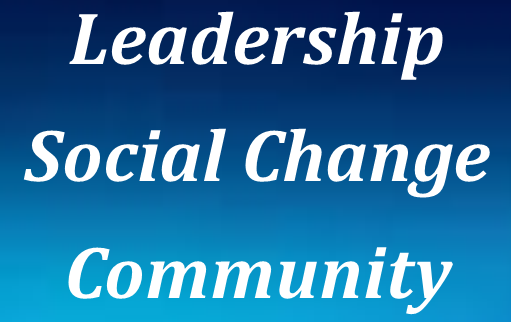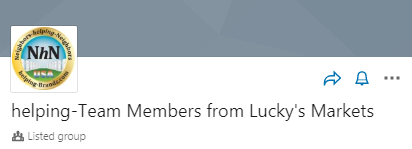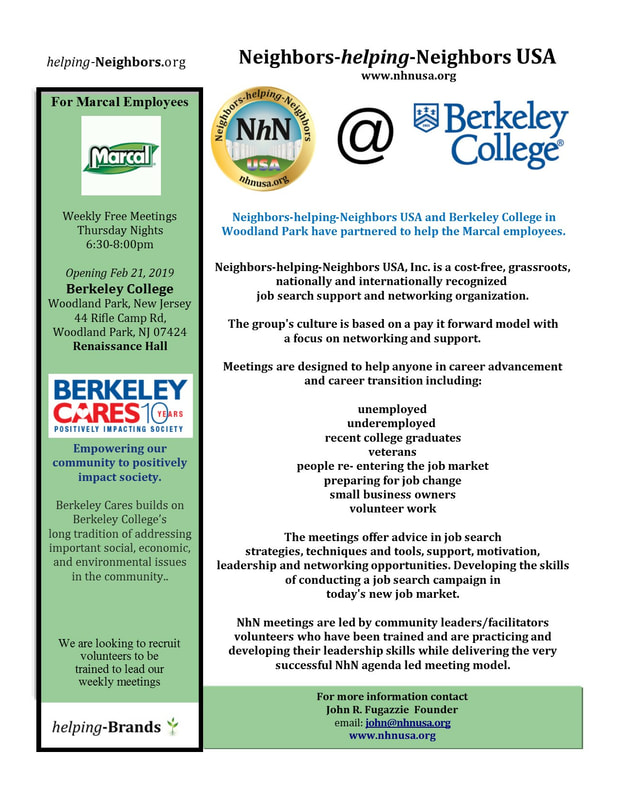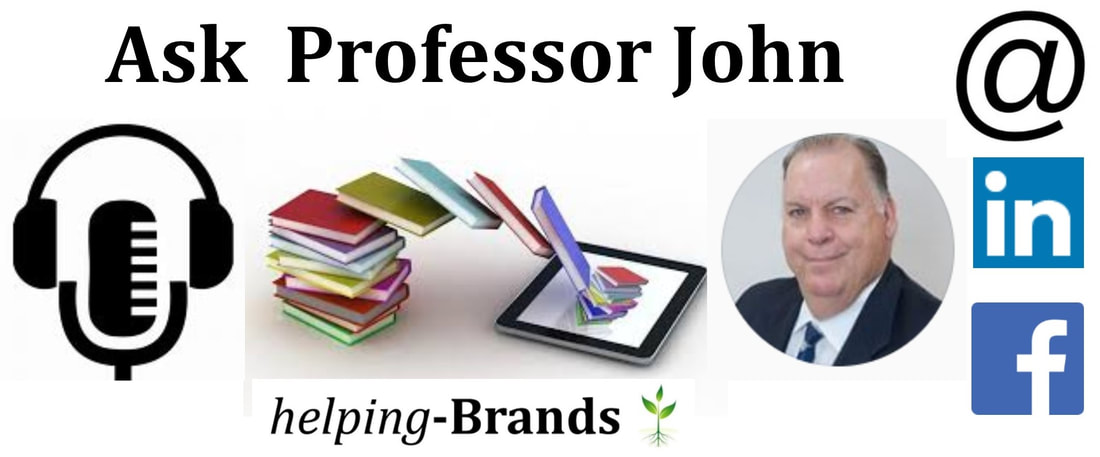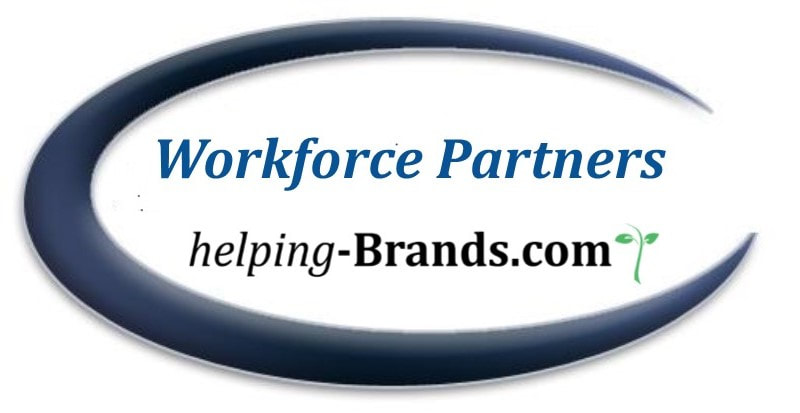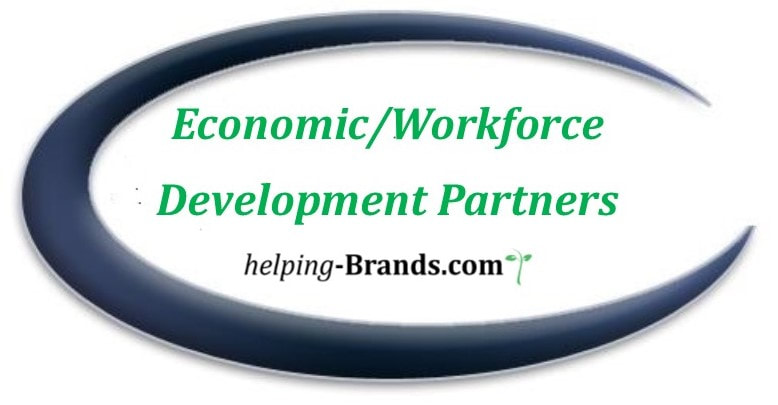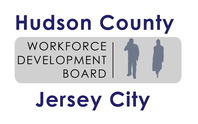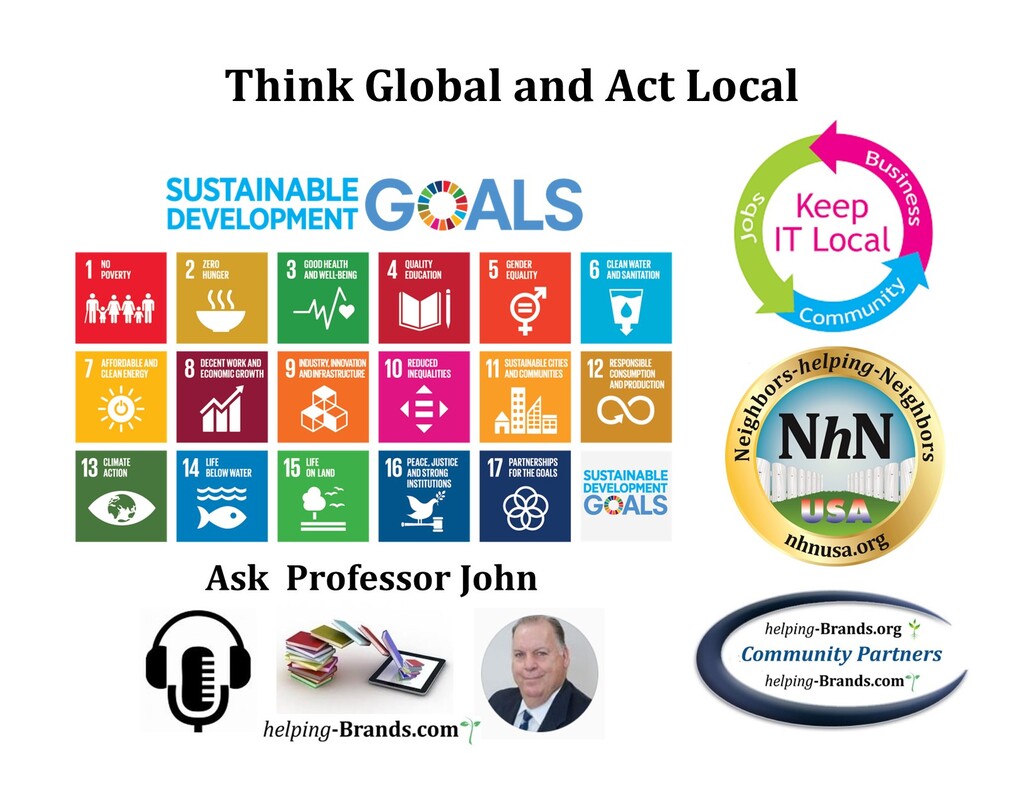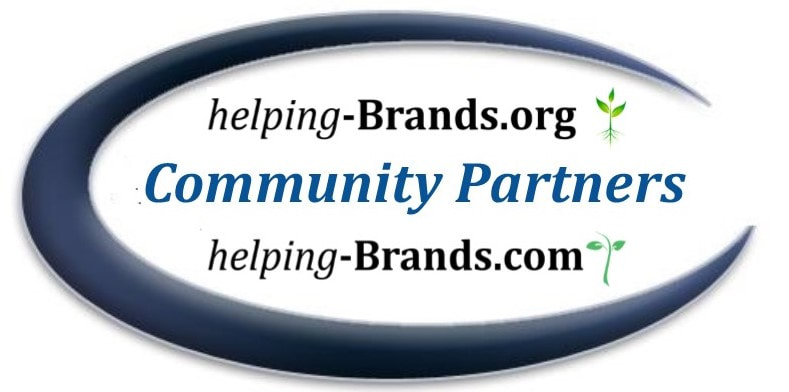Impactful Ways to Take Action in Your Community for the Causes You Believe In
Article by Naomi Johnson
Taking positive action in your community has never been more critical. In an age where social media activism can only go so far, it's essential to step out and make a tangible difference. Whether your passion lies in social justice, climate change, or education, your voice matters. This article, courtesy of Neighbors Helping Neighbors USA and helping-brands.com and helping-Brands.org will offer you a road map with eight decisive steps for community involvement. Dive in and discover how you can be a force for good.
March to the Beat of Your Own Drum
One of the most visible ways to take a stand is by participating in public marches and demonstrations. This approach serves as a rallying point for like-minded people, amplifying your message. Not only do these events garner media attention, but they also show strength in numbers. Joining in a march sends a loud and clear message that you're not alone in caring deeply about your chosen cause.
Shape Tomorrow’s Leaders Today
When it comes to long-term impact, few careers are as rewarding as education. As an educator, you're uniquely positioned to shape young minds and, by extension, the future. You may want to explore earning an online EdD degree to gain the skills needed to influence education policy, curriculum, and instructional methods. With the flexibility of online learning, you can balance work, life, and your drive to make a difference.
Be the Nonprofit Hero Your Cause Needs
Setting up a nonprofit corporation can facilitate your community involvement significantly. The structure lends credibility to your cause and simplifies the process of applying for grants and public funding. Operating as a nonprofit ensures transparency and offers a sustainable way to drive your initiatives forward. It's a long-term investment in your community that can make a genuine difference. Keep in mind that in order to set up your nonprofit legally, you’ll need to create bylaws that include how your board will meet and vote as well as rules about conflicts of interest.
Events That Unite
Organizing events to highlight your cause is a creative way to involve your community. Whether it’s a fundraiser, educational seminar, or a community clean-up, events foster engagement. Utilize premade online templates to craft eye-catching invitations that make your event the talk of the town. Such gatherings not only educate but also offer a platform for attendees to become active contributors to your cause.
Social Media as a Megaphone
In our digital age, you can't afford to overlook the power of social media for activism. Platforms like Twitter, Facebook, and Instagram offer a convenient space to reach a broad audience. Whether you're sharing inspiring stories, educational content, or real-time updates, social media is your global stage.
Service with a PurposeOrganizing service projects is a hands-on way to support your cause actively. Whether you're planting trees, painting schools, or delivering food to the needy, service projects offer immediate, tangible benefits to your community. These projects not only help you practice what you preach but also attract volunteers who share your passion, thereby expanding your circle of influence.
The Power of the Petition
Online petitions are more than just a click; they're a collective call to action. When you start a petition, you're mobilizing a community of supporters to demand change from those in power. With enough signatures, your petition can serve as a powerful bargaining tool when negotiating with decision-makers.
Government Meetings—Your Arena for Change
Local government meetings are often overlooked as a platform for change. Yet, these gatherings are where decisions affecting your community are made. Engage in these sessions to speak up for what you believe in. Your presence and activism at these meetings can inspire change, from policy alterations to the allocation of public funds for your cause.
There's no shortcut to creating a better world, but your effort counts more than you might think. By engaging in marches, committing to educational development, founding nonprofit organizations, orchestrating community events, wielding social media, executing service projects, initiating petitions, and advocating at government meetings, you embody the change you seek. Don't wait for someone else to make the world better. Take action today, and shape your community for the better, one step at a time.
Looking for resources that can help with a career change? Take a look at Neighbors Helping Neighbors USA and helping-brands.com and helping-Brands.org today.
March to the Beat of Your Own Drum
One of the most visible ways to take a stand is by participating in public marches and demonstrations. This approach serves as a rallying point for like-minded people, amplifying your message. Not only do these events garner media attention, but they also show strength in numbers. Joining in a march sends a loud and clear message that you're not alone in caring deeply about your chosen cause.
Shape Tomorrow’s Leaders Today
When it comes to long-term impact, few careers are as rewarding as education. As an educator, you're uniquely positioned to shape young minds and, by extension, the future. You may want to explore earning an online EdD degree to gain the skills needed to influence education policy, curriculum, and instructional methods. With the flexibility of online learning, you can balance work, life, and your drive to make a difference.
Be the Nonprofit Hero Your Cause Needs
Setting up a nonprofit corporation can facilitate your community involvement significantly. The structure lends credibility to your cause and simplifies the process of applying for grants and public funding. Operating as a nonprofit ensures transparency and offers a sustainable way to drive your initiatives forward. It's a long-term investment in your community that can make a genuine difference. Keep in mind that in order to set up your nonprofit legally, you’ll need to create bylaws that include how your board will meet and vote as well as rules about conflicts of interest.
Events That Unite
Organizing events to highlight your cause is a creative way to involve your community. Whether it’s a fundraiser, educational seminar, or a community clean-up, events foster engagement. Utilize premade online templates to craft eye-catching invitations that make your event the talk of the town. Such gatherings not only educate but also offer a platform for attendees to become active contributors to your cause.
Social Media as a Megaphone
In our digital age, you can't afford to overlook the power of social media for activism. Platforms like Twitter, Facebook, and Instagram offer a convenient space to reach a broad audience. Whether you're sharing inspiring stories, educational content, or real-time updates, social media is your global stage.
Service with a PurposeOrganizing service projects is a hands-on way to support your cause actively. Whether you're planting trees, painting schools, or delivering food to the needy, service projects offer immediate, tangible benefits to your community. These projects not only help you practice what you preach but also attract volunteers who share your passion, thereby expanding your circle of influence.
The Power of the Petition
Online petitions are more than just a click; they're a collective call to action. When you start a petition, you're mobilizing a community of supporters to demand change from those in power. With enough signatures, your petition can serve as a powerful bargaining tool when negotiating with decision-makers.
Government Meetings—Your Arena for Change
Local government meetings are often overlooked as a platform for change. Yet, these gatherings are where decisions affecting your community are made. Engage in these sessions to speak up for what you believe in. Your presence and activism at these meetings can inspire change, from policy alterations to the allocation of public funds for your cause.
There's no shortcut to creating a better world, but your effort counts more than you might think. By engaging in marches, committing to educational development, founding nonprofit organizations, orchestrating community events, wielding social media, executing service projects, initiating petitions, and advocating at government meetings, you embody the change you seek. Don't wait for someone else to make the world better. Take action today, and shape your community for the better, one step at a time.
Looking for resources that can help with a career change? Take a look at Neighbors Helping Neighbors USA and helping-brands.com and helping-Brands.org today.
Building Anchor Institution workshop
Project Tackling Food Deserts - Creating Food Solutions
Creating collaboration efforts to help feed the population healthier foods, assist feeding people with severe food needs high quality healthy food - Pilot program New Jersey
Creating collaboration efforts to help feed the population healthier foods, assist feeding people with severe food needs high quality healthy food - Pilot program New Jersey
|
The Sustainable Development Goals are:
|
The 2030 Agenda for Sustainable Development,
adopted by all United Nations Member States in 2015, provides a shared blueprint for peace and prosperity for people and the planet, now and into the future. At its heart are the 17 Sustainable Development Goals (SDGs), which are an urgent call for action by all countries - developed and developing - in a global partnership. They recognize that ending poverty and other deprivations must go hand-in-hand with strategies that improve health and education, reduce inequality, and spur economic growth – all while tackling climate change and working to preserve our oceans and forests. |
|
Women's Rights Information Center
108 West Palisade Ave. Englewood, NJ 07631 201.568.1166 Register on Eventbrite Job Search 2022 OverviewJob Search GroupingJob Search ToolsLeadershipCommunity|VolunteerismAlternative EmploymentBranding|Marketing UCareer TransitionEducation|Training|SkillsMental AttitudeAssessmentChange | CultureInterviewingLinkedIn.comNetworkingResearch|PlanningResumes |Covers |LISocial MediaSalary Negotiation
Special Community EffortsJanuary 2020
Set up emergency effort to connect supermarket employees who suddenly lost their jobs. 193 joined group, connected with other chains in my network, many landed jobs quickly.
Marcal Feb 2019Fire burned down factory, set up effort to help recconnet them to new employment and connect with state benefits.
Message from CEO Rob Baron
From: Rob Baron
To: John R. Fugazzie <[email protected]> Sent: Sun, Feb 10, 2019 12:28 pm Thanks John. I appreciate you helping our associates. They are a great workforce and deserve employment. Rob Rob Baron Chief Executive Officer Soundview Paper Company One Market Street Elmwood Park, NJ 07407-1401 ArticlesWatch: Drone Flyover of Marcal Paper Fire Aftermath The eight-alarm ripped through the Elmwood Park facility Wednesday night. The flames lit up the night sky and embers blew onto Rt. 80. By Daniel Hubbard, Patch Staff | 1.31.19
Join LinkedIn Group > helping-Neighbors.org now helping Marcal Paper employeesRapid Reemployment Initiative Launched
|
USDOL Blog
NJ One Stop Locations
|
|
William H. Schulz, Manager
New Jersey Division of Vocational Rehabilitation Services 438 Summit Avenue, Sixth Floor Jersey City, NJ 07306-3187 phone: 201-217-7180 fax: 201-217-7287 email: [email protected] LOCAL DVRS OFFICES: Bergen County DVRS: 60 State Street 2nd Floor Hackensack, New Jersey 07601-5471 Phone: 201-996-8970 Fax: 201-996-8880 VP: 973-968-6556 Passaic County (Paterson): 200 Memorial Drive 1st Floor Paterson, New Jersey 07505 Phone: 973-742-9226 Fax: 973-279-5895 VP: 973-968-6556 Essex County (Newark): 990 Broad Street 2nd Floor Newark, New Jersey 07102 Phone: 973-648-3494 Fax: 973-648-3902 VP: 862-772-7166 Hudson County (Jersey City): 438 Summit Avenue 6th Floor Jersey City, New Jersey 07306-3187 Phone: 201-217-7180 Fax: 201-217-7287 VP: 201-942-0085 |
Hudson County One Stop
|
Jersey City One Stop
|
Bergen County | Passaic County - Passaic | Passaic County - Paterson Essex County - East Orange | Essex County - Newark
Hudson County - Jersey City | Hudson County - Union City
Morris County - Morris Plains | Morris County - Randolph
Warren County | Sussex County
Union County - Elizabeth | Union County - Plainfield
Middlesex County - New Brunswick | Middlesex County - Perth Amboy
Monmouth County - Eatontown | Monmouth County - Neptune
Hudson County - Jersey City | Hudson County - Union City
Morris County - Morris Plains | Morris County - Randolph
Warren County | Sussex County
Union County - Elizabeth | Union County - Plainfield
Middlesex County - New Brunswick | Middlesex County - Perth Amboy
Monmouth County - Eatontown | Monmouth County - Neptune
Attitude
Consider working with a Career Coach (fee based) if you can afford it. Make sure that coach has proper credentials, and seek out references from people who have used them.
Networking
Networking is the best way to find a job, because the vast majority of job vacancies are never advertised; they’re filled by word of mouth. What is meant by networking? Networking is nothing more or less than getting to know people. Although you may not realize it, you’re already networking every day and everywhere you go.
Adopting a networking lifestyle will help you find the right job and making valuable connections in your chosen field. It will also help you to stay focused and motivated during your job search.
Don’t be generic when looking for job leads. Your networking is going to be much more effective if you have specific career goals or employers in mind. Using a line like: “Please let me know if you hear of anything” is of no use, even if you might think that setting such a wide target may bring in the jobs – it won’t. Asking for specific information, or job leads is much more focused and easier for the networking contact.
Prepare a Target List of – establish distances from home, industries, company names, do research on them, bring list to weekly meetings so you can talk from it. (Candidate Networking Profile)
Create a LinkedIn profile and connect with your professional colleagues and other NhN members to build your network. (Once you do, join the Neighbors-helping-Neighbors USA LinkedIn Group) also join other job search groups in your area.
Create a profiles on www.LinkedIn.com , www.Monster.com , Careerbuilders.com, glassdoor.com, simplyhired.com, specialized industry sites i.e. dice for technology positions www.dice.com
Consider setting up a Job Alert with Indeed.com, , which culls jobs you specify from all sorts of job boards, including Monster and Careerbuilder set up on your specific industry boards.
Visit www.jobs411.org for large list of job search resource links all listed in one place.
Adopting a networking lifestyle will help you find the right job and making valuable connections in your chosen field. It will also help you to stay focused and motivated during your job search.
Don’t be generic when looking for job leads. Your networking is going to be much more effective if you have specific career goals or employers in mind. Using a line like: “Please let me know if you hear of anything” is of no use, even if you might think that setting such a wide target may bring in the jobs – it won’t. Asking for specific information, or job leads is much more focused and easier for the networking contact.
Prepare a Target List of – establish distances from home, industries, company names, do research on them, bring list to weekly meetings so you can talk from it. (Candidate Networking Profile)
Create a LinkedIn profile and connect with your professional colleagues and other NhN members to build your network. (Once you do, join the Neighbors-helping-Neighbors USA LinkedIn Group) also join other job search groups in your area.
Create a profiles on www.LinkedIn.com , www.Monster.com , Careerbuilders.com, glassdoor.com, simplyhired.com, specialized industry sites i.e. dice for technology positions www.dice.com
Consider setting up a Job Alert with Indeed.com, , which culls jobs you specify from all sorts of job boards, including Monster and Careerbuilder set up on your specific industry boards.
Visit www.jobs411.org for large list of job search resource links all listed in one place.
Order personal business cards for networking use (Suggested sources: Vistaprint.com - office supply stores or local printers)
LinkedIn.com
LinkedIn as a tool
1. Define Your Job Search Strategy The first step is to define your strategy. Here are some ways you can do that:
Define your target market Before you can structure your job search, you have to define what kinds of positions you will search for – the titles, levels of roles, industries, and types of companies you will pursue. At this stage, you should also be defining your preferred geographic areas and commute ranges.
Clarify your search goals and timeline When do you hope to land your new role? Is your expectation realistic and achievable? If you want to generate one or more job offers by a particular date, it will be imperative to plan backward to ensure your search is generating enough contacts and opportunities to make that happen.
Determine if the market you’re targeting aligns with your goals and timeline On average, it takes seven job interviews to produce one job offer, and 200-300 targeted opportunities to generate those seven interviews. This means that you need to have a minimum of 200-300 prospects to pursue in your search to be likely to catalyze interview invitations.
Choose and prioritize your job search methodologies There are five primary job search methodologies to leverage in your search. Which of them best match your career goals, personality, target industries, and available search time?
2. Build Your Career Communications Portfolio Step two is to build your communications portfolio. Here are some tips:
Select your career communications tools based on your job search strategyOnce your job search methodologies are clarified, you’re ready to choose the career communications tools you will need. A new resume (why a resume isn’t an effective networking tool) and LinkedIn profile are practically must-haves, but you may also need a bio or marketing brief for networking, one or more cover letters, or supplementary tools such as an interview PowerPoint presentation.
Define your career brand In today’s tight global economy, your career brand is more important than ever before. Detail yours and share it appropriately in each career communications tool you use in your search. Make sure you adapt your brand for usage in each tool in different ways.
Delineate and quantify your career achievements Achievements are a necessity in resumes; without them, your document is incomplete. Remember that achievements are best highlighted in specific ways that detail the situation or problem you faced, the actions you took to resolve the situation, and the quantifiable results you achieved in doing so.
Determine which key words to infuse in your career communications tools Keywords vary from industry to industry and role to role. As a result, you must tailor your resume for each new position you pursue with relevant key words. Additionally, your LinkedIn profile must be infused with key words.
Choose visual branding in alignment with your target market and career goals Your personal brand can and should be conveyed in your career communications tools in words, but don’t overlook visual elements as well. Visual branding refers to the use of color and formatting in your resume that makes it unique.
3. Implement Your Job Search Strategy The third and final step is to implement your strategy. Here are some ways to get this step done:
Create a weekly job search implementation plan with metrics An effective job search plan needs clear metrics to help fuel week-over-week achievement. If you’re approaching the 200-300 targets suggested above, consider breaking that total down into weekly sub-goals that will allow you to exhaust your list in 3 to 6 months.
Craft a weekly LinkedIn action plan with metrics May I suggest doing the same thing with LinkedIn? It’s easy to overlook such features as company targeting, group discussion posts, and status updates, but each of these options can help supercharge your search when leveraged fully and consistently.
Analyze your job search implementation monthly and revamp as needed By setting metrics to pursue in your search you can evaluate how it’s unfolding. Without metrics, you won’t know how to analyze your progress or identify aspects of your search that need improvement.
Perhaps most importantly, a job search plan such as this one helps you to reassess your progress at periodic intervals. If you find yourself getting too few interviews of job offers, for example, don’t wait – get help from a Job Search Coach.
1. Define Your Job Search Strategy The first step is to define your strategy. Here are some ways you can do that:
Define your target market Before you can structure your job search, you have to define what kinds of positions you will search for – the titles, levels of roles, industries, and types of companies you will pursue. At this stage, you should also be defining your preferred geographic areas and commute ranges.
Clarify your search goals and timeline When do you hope to land your new role? Is your expectation realistic and achievable? If you want to generate one or more job offers by a particular date, it will be imperative to plan backward to ensure your search is generating enough contacts and opportunities to make that happen.
Determine if the market you’re targeting aligns with your goals and timeline On average, it takes seven job interviews to produce one job offer, and 200-300 targeted opportunities to generate those seven interviews. This means that you need to have a minimum of 200-300 prospects to pursue in your search to be likely to catalyze interview invitations.
Choose and prioritize your job search methodologies There are five primary job search methodologies to leverage in your search. Which of them best match your career goals, personality, target industries, and available search time?
- Networking has long been the #1 way to find and land new jobs at all levels of hiring spectrum. Leveraging this tactic fully means having a networking strategy that you implement methodically throughout your search. This is different than simply sending out random emails to people you know who you think may know about open jobs.
- Direct outreach to targeted employers is an often-overlooked search methodology, yet it’s an excellent way to penetrate the Hidden Job Market (the 85% of jobs that are never advertised outside the hiring companies). By combining strategic networking and LinkedIn tactics you can find and get your foot in the door with companies in almost any industry in almost any location.
- LinkedIn-driven networking can supercharge your entire search. Once your profile is optimized and complete, craft a strategy for how to utilize LinkedIn to penetrate target organizations, gain influential contacts in key industries, and attract the attention of executive recruiters.
- External recruiting firms are an option for some job seekers and enable them to access open positions in the Visible Job Market (available jobs advertised outside the company). You’ll need a strategy to get your candidacy noticed and to determine if you should target retained or contingency recruiters.
- Online job boards rely on the advertising of openings in the Visible Job Market. Sites like Indeed.com, SimplyHired.com, and the LinkedIn.com job board (which is actually SimplyHired.com) collect and enable you to search open positions in one or more industries. While job boards appear seductively simple, note that you have maximum competition as you apply for open positions. Also note that when you do so your resume is parsed and analyzed by an Applicant Tracking System, which means that key word usage and age-proofing quickly become critical issues.
2. Build Your Career Communications Portfolio Step two is to build your communications portfolio. Here are some tips:
Select your career communications tools based on your job search strategyOnce your job search methodologies are clarified, you’re ready to choose the career communications tools you will need. A new resume (why a resume isn’t an effective networking tool) and LinkedIn profile are practically must-haves, but you may also need a bio or marketing brief for networking, one or more cover letters, or supplementary tools such as an interview PowerPoint presentation.
Define your career brand In today’s tight global economy, your career brand is more important than ever before. Detail yours and share it appropriately in each career communications tool you use in your search. Make sure you adapt your brand for usage in each tool in different ways.
Delineate and quantify your career achievements Achievements are a necessity in resumes; without them, your document is incomplete. Remember that achievements are best highlighted in specific ways that detail the situation or problem you faced, the actions you took to resolve the situation, and the quantifiable results you achieved in doing so.
Determine which key words to infuse in your career communications tools Keywords vary from industry to industry and role to role. As a result, you must tailor your resume for each new position you pursue with relevant key words. Additionally, your LinkedIn profile must be infused with key words.
Choose visual branding in alignment with your target market and career goals Your personal brand can and should be conveyed in your career communications tools in words, but don’t overlook visual elements as well. Visual branding refers to the use of color and formatting in your resume that makes it unique.
3. Implement Your Job Search Strategy The third and final step is to implement your strategy. Here are some ways to get this step done:
Create a weekly job search implementation plan with metrics An effective job search plan needs clear metrics to help fuel week-over-week achievement. If you’re approaching the 200-300 targets suggested above, consider breaking that total down into weekly sub-goals that will allow you to exhaust your list in 3 to 6 months.
Craft a weekly LinkedIn action plan with metrics May I suggest doing the same thing with LinkedIn? It’s easy to overlook such features as company targeting, group discussion posts, and status updates, but each of these options can help supercharge your search when leveraged fully and consistently.
Analyze your job search implementation monthly and revamp as needed By setting metrics to pursue in your search you can evaluate how it’s unfolding. Without metrics, you won’t know how to analyze your progress or identify aspects of your search that need improvement.
Perhaps most importantly, a job search plan such as this one helps you to reassess your progress at periodic intervals. If you find yourself getting too few interviews of job offers, for example, don’t wait – get help from a Job Search Coach.
Consider changing your home and cell phone voicemail messages to be more professional (like it was as if someone was calling your office)
